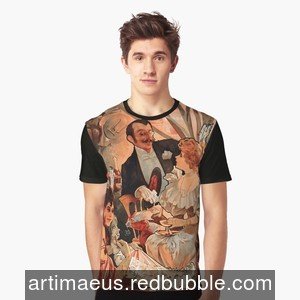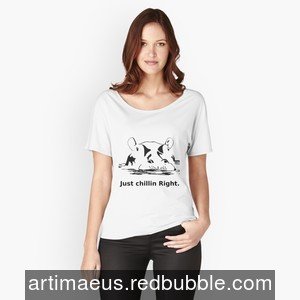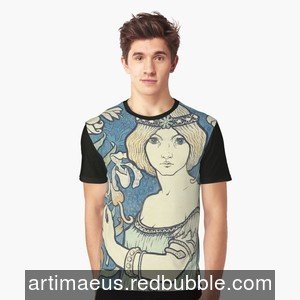- Category: Favourite Food
- Written by Paul Chubb
- Hits: 1002
Low Sugar Fermented Ginger Beer
A Diet Ginger Beer
I have yet to find a low sugar, low calorie, fermented ginger beer recipe. So I made my own. I have tried several recipes and methods, this is the easiest recipe I have done and it contains little if any sugar after fermentation
History of Ginger Beer making
Ginger beer was one of the first soft drinks and also one of the best loved. It, along with sarsparilla and root beer, were drunk in the 18th and 19th centuries. Unlike today’s softdrinks, which are water, sugar, flavour and compressed carbon dioxide, they were fermented with yeast, sugar and flavouring ingredients. Today you can still get fermented soft drinks. The most popular fermented ginger beers in Australia are the Bundaberg range found in most supermarkets. I prefer Saxby’s for a stronger, stony taste, but they are becoming hard to find.
Creating a Bug
One method of making ginger beer involves creating a ginger beer plant or, more properly, a “bug”. This is a muddy concoction of ginger, yeast, sugar and water that grows over time and is fed daily. Every week, the juice is extracted and is fermented to create the ginger beer. Some would say this is the only way to make true ginger beer.
I haven’t used this method for a very long time. The recipe I was using then – others may vary – had the downsides of:
Two weeks elapsed before the first drink. This improves somewhat, as you are setting up a ginger beer pipeline that will yield drink on a weekly basis;
Daily task of feeding your plant sugar and yeast;
Lots of ginger beer – more than you can drink every week and bottling is a real chore;
The need to divide the ginger beer plant in two every week and find a home for the extra one.
One Shot recipes
There are also one shot recipes in which you mix water, yeast, sugar and ginger and then ferment for a period of time. They have also been around for a long time. These are quicker and easier. What is extremely difficult to find is a recipe for a diet version of either approach. Following is a very reliable recipe for a diet tipple that has little or no sugar left after fermentation
Ingredients
Water:
In most places water is chlorinated to kill bacteria and other nasties. The problem is that it will also inhibit the yeast in doing its job. So your first job is to remove the chlorine. Of the following methods I have only used the last so beware...
Method 1: Agitation
Pouring water from a height between containers 10 times is said to remove chlorine.
Method 2: Chemicals
You can purchase and use tablets that will remove chlorine and other impurities. I believe that they are also used when camping etc. Check the beer making sites or search for removing chlorine from water.
Method 3: Waiting
Water that is allowed to sit in a container that isn’t sealed will expirate the chlorine naturally. Leave it about 24 hours.
Method 4: Boiling
Bring a pan of water to the boil and boil for at least 3 minutes. This will remove most or all of the chlorine in the water.
Yeast:
Yeast eats sugar to produce carbon dioxide and ethanol. The carbon dioxide is what causes the soft drink to be fizzy. For this recipe you need normal dried bakers yeast (Saccharomyces cerevisiae). In Australia, you can get this in any supermarket in either sachets or larger containers. You will need about ½ to 1 tsp per brew. The sachets contain about twice what you need per brew. Store the yeast in the fridge for longer life.
Acid:
Yeast thrives in an acidic low oxygen environment. Usually tap water is somewhere between neutral and slightly alkaline or base. The two common ways to make the water acidic for brewed soft drinks are to: add lemon juice or cream of tartare. I use the latter, preferring the taste to lemon. If you want to use lemon juice, add about a table spoon to a 2L brew and then adjust over brews and time to your taste.
Ginger:
I use dried ground ginger for this recipe. Like all spices, the age of the ginger affects how strong the taste is: the older it is the more you need. In addition I like my ginger beer on the stony end ie with a strong ginger taste. You can of course buy ginger from the supermarket, but you will use a whole bottle on two to three brews. I bought half a kilo of ginger powder off ebay at a much cheaper price than in the super market.
Sugar:
Sugar is only used to feed the yeast and so produce the bubbles. However it is possible that the remaining parts left by the yeast will add to the flavour. I am currently using dark brown sugar for this reason instead of white table sugar. You could also experiment with things like treacle, golden syrup and molasses to provide different flavours.
Sweetener:
Each artificial sweetener has good and bad points, and any could theoretically be used. Saccharin. for example is easy to get and cheap, but may well leave a bitter after taste.
I am using splenda which is a mix of sucralose and maltodextrin. Maltodextrin is supposed to improve mouth feel. You can get splenda in sachets and also boxes. You need a cup per brew so find a box.
I have also used hermesetas granluated which is a mix of inulin, oligofructose and sucralose. It seems to work ok. At one stage I was worried about the inulin becoming gel like and not mixing properly.
The key thing is that you are trying to replace a cup or a bit more of sugar (depending on how sweet you like your ginger beer). Most measurements of artificial sweeteners are based on sugar replacement.
Testing Sugar content
There are probably only two approaches accessible in the home to measure sugar content. You can use a hydrometer. Most beer making instruction sites will have the instructions. You can also use a refractometer (you need to sugar kind not for other things), which is what I have used, which is much simpler.
In either case I would expect to be left with a reading of about 1% sugar even when all of the sugar is gone. Essentially you have so many other things in the brew and they will read as sugar.
A good rule of thumb, to check sugar content, is to see how long fermentation will continue. There are several limiting factors to fermentation. As long as it isn’t too cold, for our purposes the two things that will stop fermentation is senescence – too old – of the yeast in the brew and exhaustion of the sugar. 40Ml of sugar in 2L of water stops fermenting within about 24 hours. Half a cup of sugar in 2L of water will still be going after two to three days.
My recipe with 40ml of sugar, stops fermenting in about 24 hours and shows a sugar content – on my cheap ebay refractometer – of 1%.
Bottling Equipment
- A clean 2L soft drink bottle per quantity (see second last step of the recipe method for cleaning)
- The widest mouth funnel you can find to fit the neck of the bottle
- scales, measuring cups and spoons (1 cup = 250ml, 1 tbl sp = 20ml, 1 tsp = 5ml)
- A skewer or equivalent to encourage powders through your funnel.
- Thermometer in a scale to read 30 to 40° C
- Sugar Refractometer (optional)
Recipe
Ingredients
- 2 tbl spoons brown sugar
- 16g dried ground ginger
- 1 cup splenda
- ½ tsp cream of tartare
- 1 tsp dried bakers yeast
- 2l of water
Method
- Boil just over 2L of water for 3 minutes at a rolling boil to remove the chlorine (if chlorinated). Cool to between 30 and 40° C. I usually aim for about 35° to give the yeast a good start. Too hot and the yeast will die, too cold and it will be slow and you won’t get good carbonation.
- Using the funnel, measuring tools and your poking skewer, add the dried ingredients to your bottle.
- Pour the cooled water into the bottle leaving a gap at the top of about the same as the original drink had. This is important since it will help to reduce the risk that the pressure will break the bottle.
- Put the lid on tightly and shake the bottle and invert it etc until all the powder is suspended or dissolved.
- Place in a warmish dark place to ferment for 1 to 2 days. Refrigerate and drink cold. Note take care opening it may “boil” over.
- Once the bottle is empty of liquid, half fill with water, shake and pour out. Repeat and upend to dry.
- Repeat the process from step 1.





























